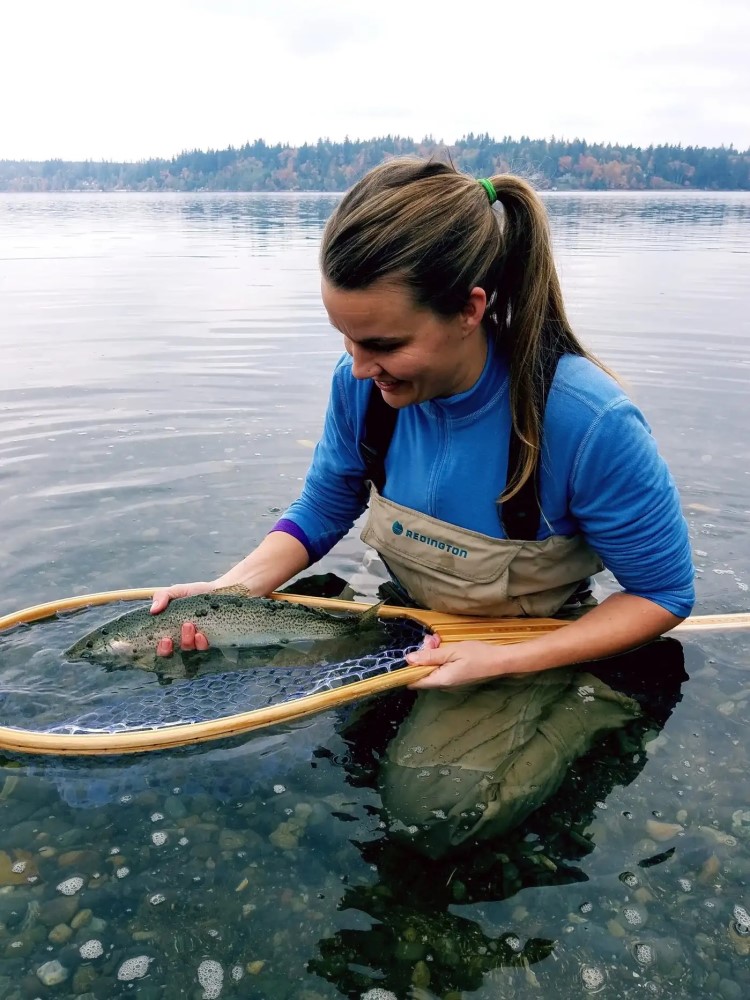 Anyone who’s followed Angler’s Tonic over the years knows that I appreciate sea run cutthroat trout and consider them to be an extremely overlooked fish. Just last year I caught some of the largest sea runs of my life, fish that ranged toward 18 inches. I saw a few more than were definitely over 20 inches and could have been mistaken as a small steelhead. I plan to get back to Southeast Alaska again this year, to visit those same pools on a remote stream and see if I can break that 20 inch mark. But you don’t have to go that far fro sea runs. Puget Sound has an excellent fishery and you can find good options all year long. Here’s some recent info on sea runs, released by Washington Department of Fish and Wildlife.
Anyone who’s followed Angler’s Tonic over the years knows that I appreciate sea run cutthroat trout and consider them to be an extremely overlooked fish. Just last year I caught some of the largest sea runs of my life, fish that ranged toward 18 inches. I saw a few more than were definitely over 20 inches and could have been mistaken as a small steelhead. I plan to get back to Southeast Alaska again this year, to visit those same pools on a remote stream and see if I can break that 20 inch mark. But you don’t have to go that far fro sea runs. Puget Sound has an excellent fishery and you can find good options all year long. Here’s some recent info on sea runs, released by Washington Department of Fish and Wildlife.
A new study by fishing community volunteers, a local conservation group and the Washington Department of Fish and Wildlife (WDFW) on sea-run cutthroat trout was recently released shedding new light about this fish that inhabits coastal and inner-marine waterways of the western United States, including Puget Sound and Hood Canal.
Coastal cutthroat trout (Oncorhynchus clarkii clarkii) are one of seven species of anadromous salmonids in the genus Oncorhynchus. Due to their relatively small size, limited commercial value, and low abundance, the biology of sea-run cutthroat trout isn’t well understood. While not as heavily researched as their cousins the Pacific salmon and steelhead (anadromous rainbow trout), coastal cutthroat trout are popular quarry for anglers in both nearshore marine waters and coastal streams from California to Alaska.
The one-year study titled “Technology-Based Solutions Provide the First Estimate of Sea Lice Infections for Wild Coastal Cutthroat Trout” on the American Fisheries Society website was a grassroots effort that received financial backing and on-the-water support from volunteers in the fishing community and local conservation groups.
Much of that effort was spearheaded by the Coastal Cutthroat Coalition, a Washington-based non-governmental organization, in close coordination with the WDFW.
The goal of the research was to identify, prioritize, and answer key biological questions necessary to improve an understanding of this unique species of anadromous fish. This also included a way to describe patterns of infection of a unique parasitic species known as an “argulid” that affect sea-run cutthroat trout and the more common copepod “sea lice” parasite that also infects salmon and trout; evaluate the accuracy and dependability of volunteer angler reporting; and to pilot an online data reporting tool.
Sea-run cutthroat trout lack commercial fishing interest and often receive limited scientific attention. This can lead to insufficient data to make informed management decisions and is where the use of angler reported data fills in the gap.
The benefit of involving anglers and conservation partners in fisheries management activities has been well documented ranging from habitat improvements, fish rescue, catch reporting, and others.
According to the Coastal Cutthroat Coalition, recreational fishing for sea-run cutthroat in Washington generates more than 20,000 angler trips and roughly $1.1 million in economic value annually.
As other winter saltwater opportunities become increasingly restricted, anglers have taken notice of this exciting catch-and-release marine area fishery.
This study is just one of many that WDFW researchers, biologists, and fishery managers have been leading up in recent years to investigate Puget Sound salmon processes.
